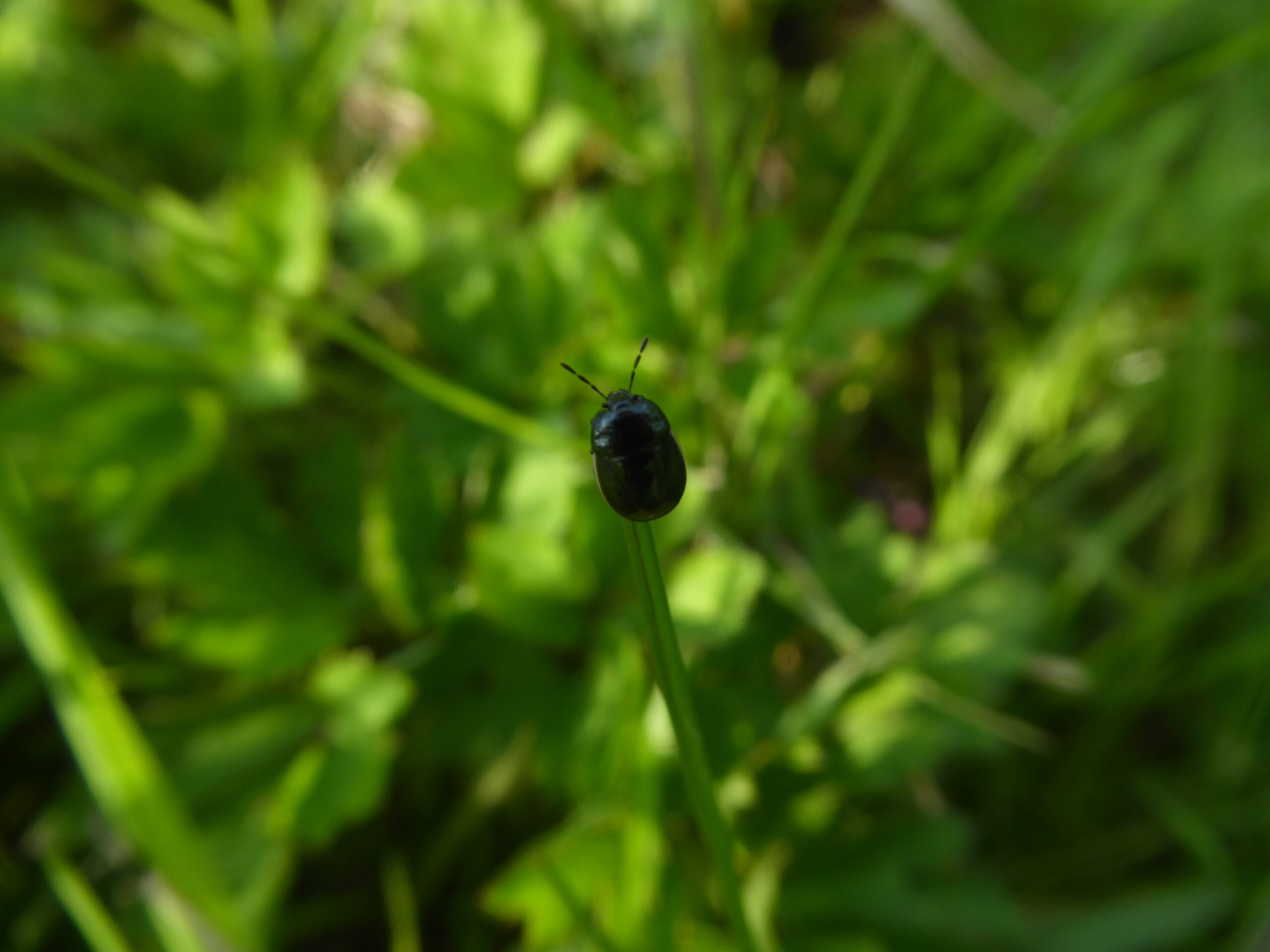It looked like a little black bud sitting on top of a stem and I assumed it was a leaf beetle of some kind. Then I noticed the slim white edge to its body and the rounded shape. The bordered shield bug is a small, 3.5-4.5mm, black shield bug with white margin and a notch in the front of its head (zoom in). Its preferred diet is bedstraws and preferred habitat is sunny and dry. The watermeadow is slowly drying out, though the soil is hardly loose. However, there are plenty of bedstraws and cleavers around.
-
Pampas Grass (Cortaderia sellonana)
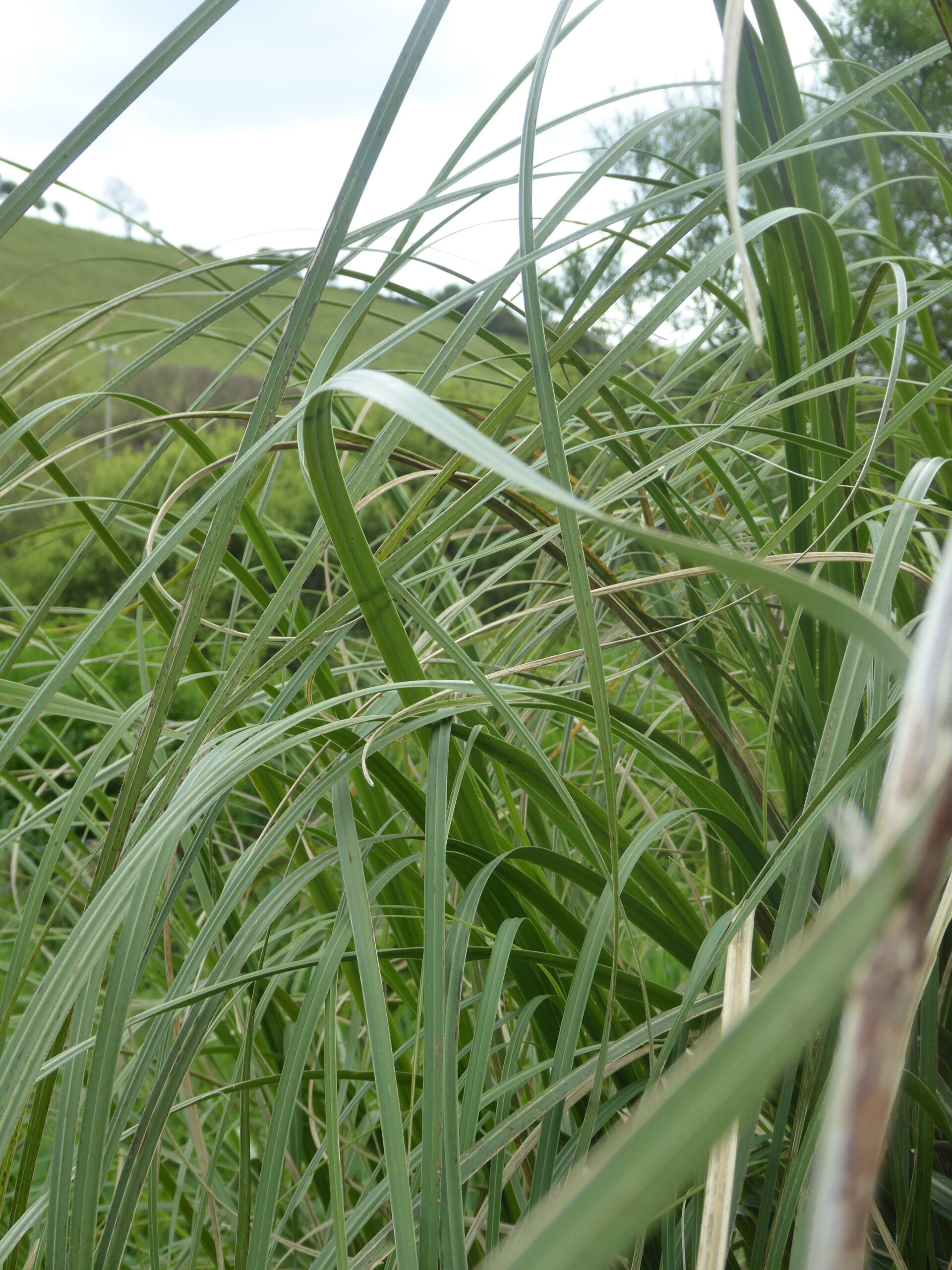
Like montbretia and other garden escapees, pampas grass pops up at the side of the road and in other wasteland locations. There is a place I’ve nicknamed ‘Pampas Park’ on my walk into the village. It’s quite lovely with the sea in the background and different shapes of pampas blooms. Pampas grass was introduced to the UK in the 1840s, by horticulturalists, most species coming from South American countries, where it grows wild along riverbanks.
But it has taken a lot of effort to remove the husky cores from our watermeadow. We removed eight from Vole County and they left craters in which we planted trees to maintain the stability of the bank. The remaining pampas grasses were on our boundaries and now we have only one left, tucked away behind Alder Corner on the bank of the stream. Perhaps we will leave it there in its preferred environment.
Does pampas grass have any redeeming features? Well, it’s an evergreen, dense enough to provide a place for a nest, and it grows rather stately creamy plumes when it flowers in the late summer. The downside is that it takes up a lot of space in breadth and depth and is quite prolific, so you end up with several clumps, and the leaves can have razor sharp edges.
-
Annual Honesty (Lunaria annua)

A bright purple flower caught my eye. I was drawn to its dark veins and fading colour, paler towards the centre. We’ve spotted a number of purple flowers, but I didn’t recognise this one, so I looked it up and was surprised to find out that it was honesty. When I thought about it I vaguely remembered seeing the iconic seedheads in the garden before, maybe the summer before the blog. So, although it is called annual honesty, it is biennial in flowering. It germinates in the spring, grows a low rosette of foliage in the summer and shoots up to 1.5m stems topped with flowers the following April/May. The flowers turn into green coin-shaped seedheads, which become translucent silver and are then often used in dried flower arrangements. The leaves are heart-shaped with jagged edges. These flowers were not so tall. They will grow on waste ground but prefer sun or partial shade and fertile soil.
-
Capillary Thread-moss

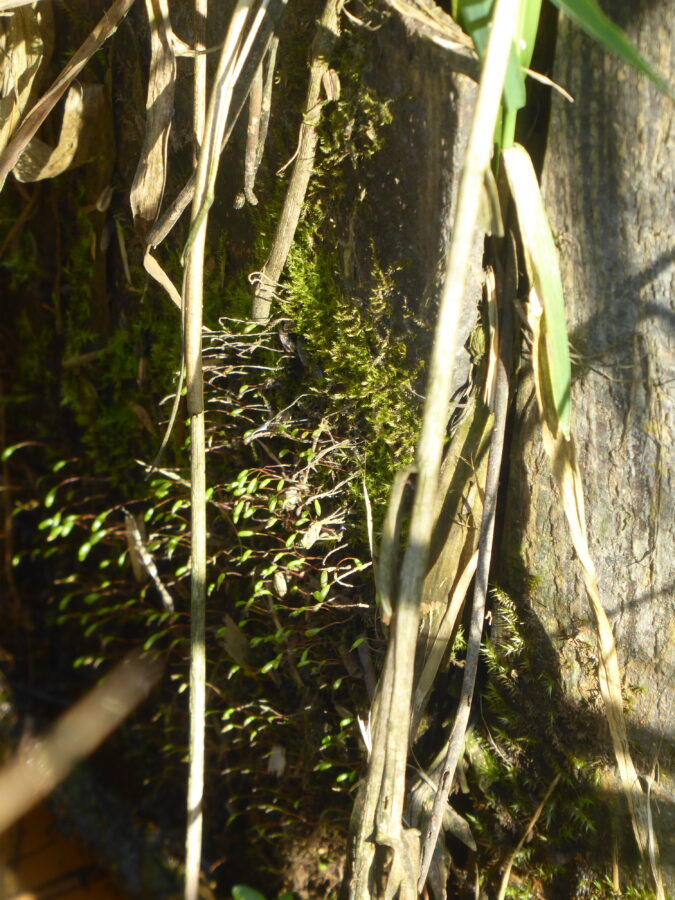
In our pond, we built a tiny island and surrounded it with planks of wood to stop it eroding away. This moss was clinging to the planks. It was on the north side of the island, which is interesting because I read once that moss grows on the north side of tree trunks. This is a thread-moss. The capillary thread-moss fruits with drooping green capsules on the end of red stems, called setae. The foliage is green feathery fronds.
-
Bladder Snail
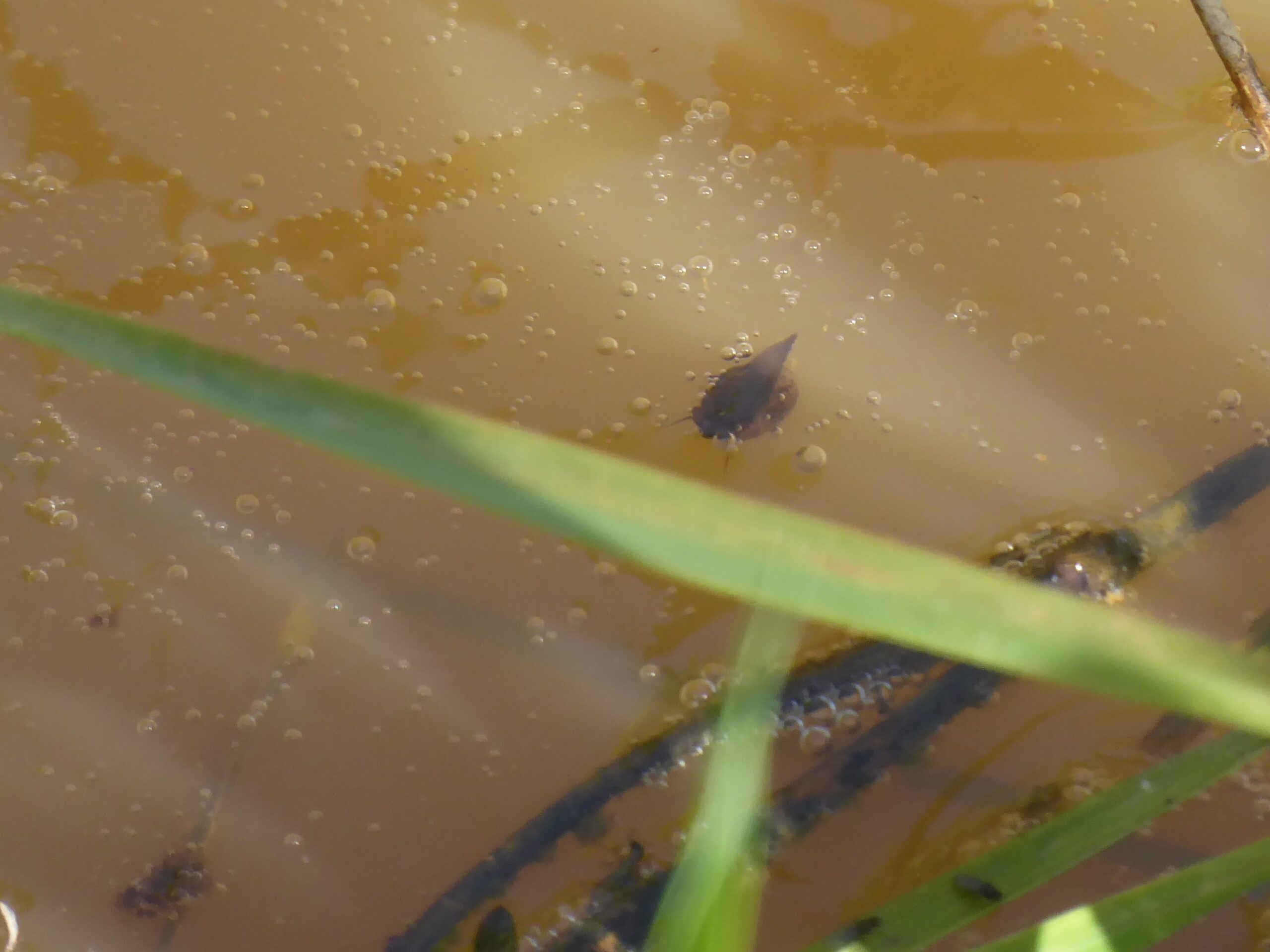
Mr C and I spent a while pond-watching yesterday. We spotted tadpoles, whirligig beetles and pond snails. The snails were bladder snails and were cruising upside-down along the underside of the water’s surface. Bladder snails eat dead plant matter. They are prolific breeders and the American Bladder Snail (Physella acuta), often used for cleaning up aquariums, is considered an invasive species. The Common Bladder Snail (Physa fontinalis) is pale, oval in outline and is common throughout the British Isles. Bladder snails swim upside-down on the surface of the water to breathe, as they have lungs, not gills.
-
Today in the Watermeadow
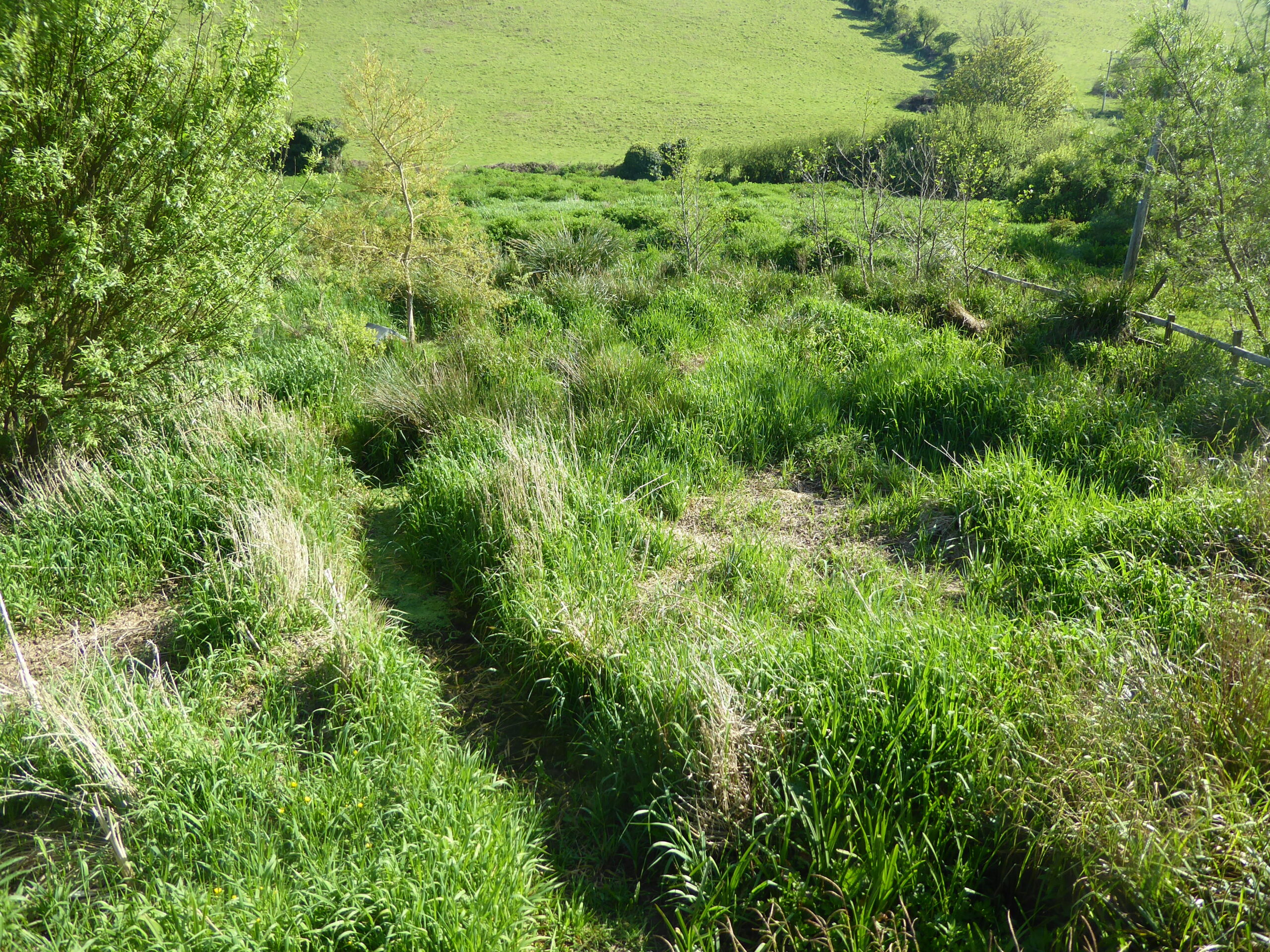
The reed canary grass is growing taller. There are still some tufts of dead grass and two patches of flattened dead grass. Little Venice is still really muddy and carpeted with weed at the end nearest the pond. We have clumps of speedwell, celandine, and buttercups. We’ve seen peacock, orange-tip and other white butterflies, beetles, bees, even a grasshopper – just one so far! The willows and alders are sprouting leaves. There are three alder saplings that we are keeping an eye on as they don’t have any leaves yet. Watermint is popping up, water horsetail, as well as nettles and bindweed curling up out of the mud already. There are docks and sorrels – I still think there are more types than I have noted, but they all look much the same to me! In the pond, there are tadpoles, water snails and other pondlife still to be identified, and then there have been mayfly and midge larvae in the stream.
-
Today in the Valley
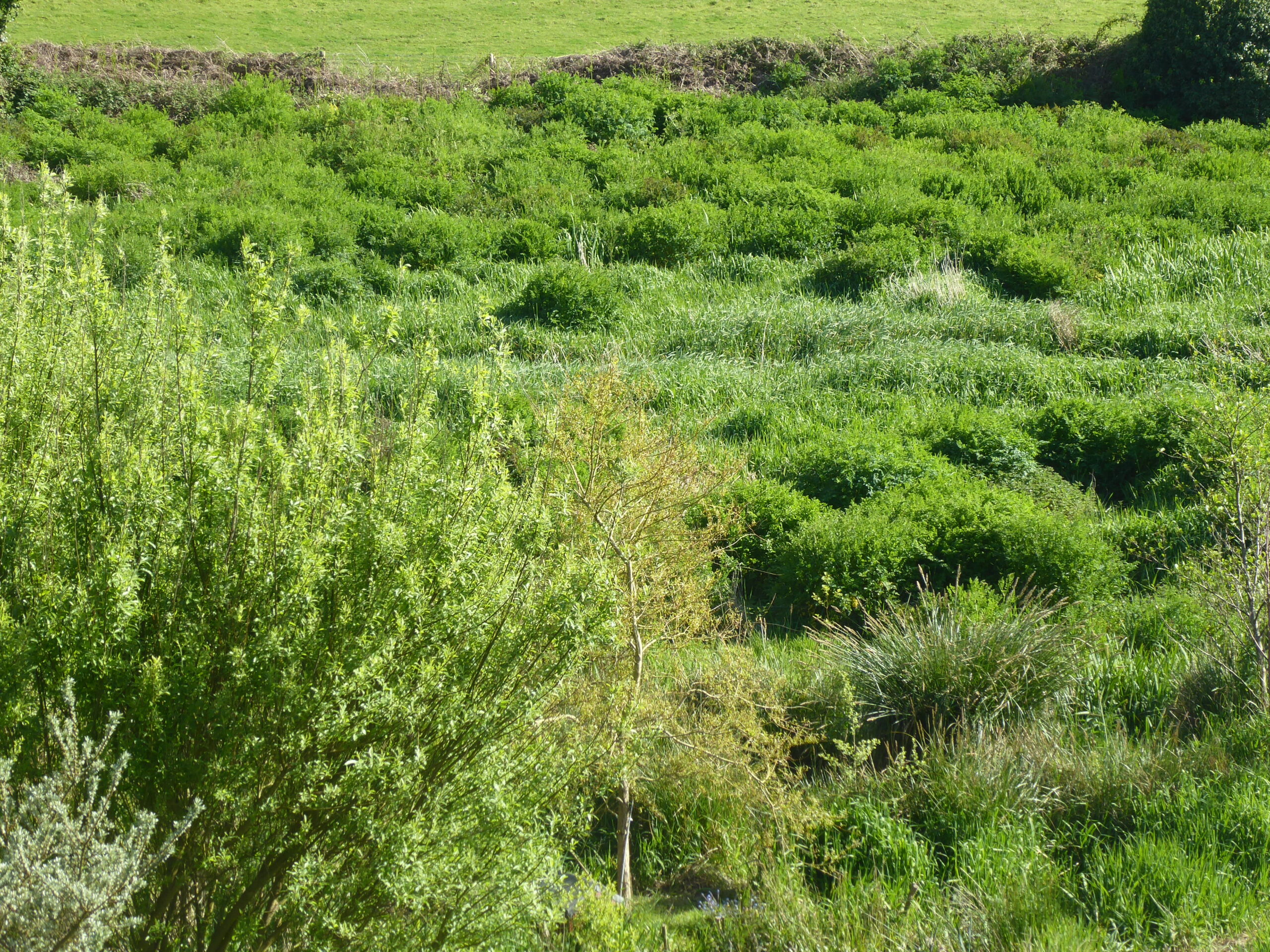
The valley is a collage of green. The trees lining the fields are all in leaf and blossoms have finished. The reed canary grass is nearly as tall as the hemlock water dropwort, giving the valley floor the appearance of a bumpy green throw. By next month the HWD will be in flower and all the foliage will be much the same height. I am surprised that the housemartins and swifts haven’t returned as yet. I looked up when they are due and found out that it can be as early as March, but generally April and May. There are baby moorhens on the pond next door. They look like little black pompoms. We haven’t seen the herons and egrets for a few weeks, so hopefully they are nesting further up the valley. Butterflies, bees, and bugs are very much in evidence.
-
Velvet Mite (Trombidium holosericeum)

Little Venice is still quite muddy, there is little grass but carpets of water starwort and algae. Amongst the green and sludgy brown, tiny dots of scarlet caught my attention. They kept disappearing into the matting of debris and vegetation, but this is what they looked like – tiny eight-legged bugs, more tick-shaped than spiderlike, even though they are arachnids. In fact, the two front legs are used as feelers, as they have no antennae. They are most often seen in spring when they emerge from hibernation, and they are carnivorous and feed on even smaller creatures and their eggs.
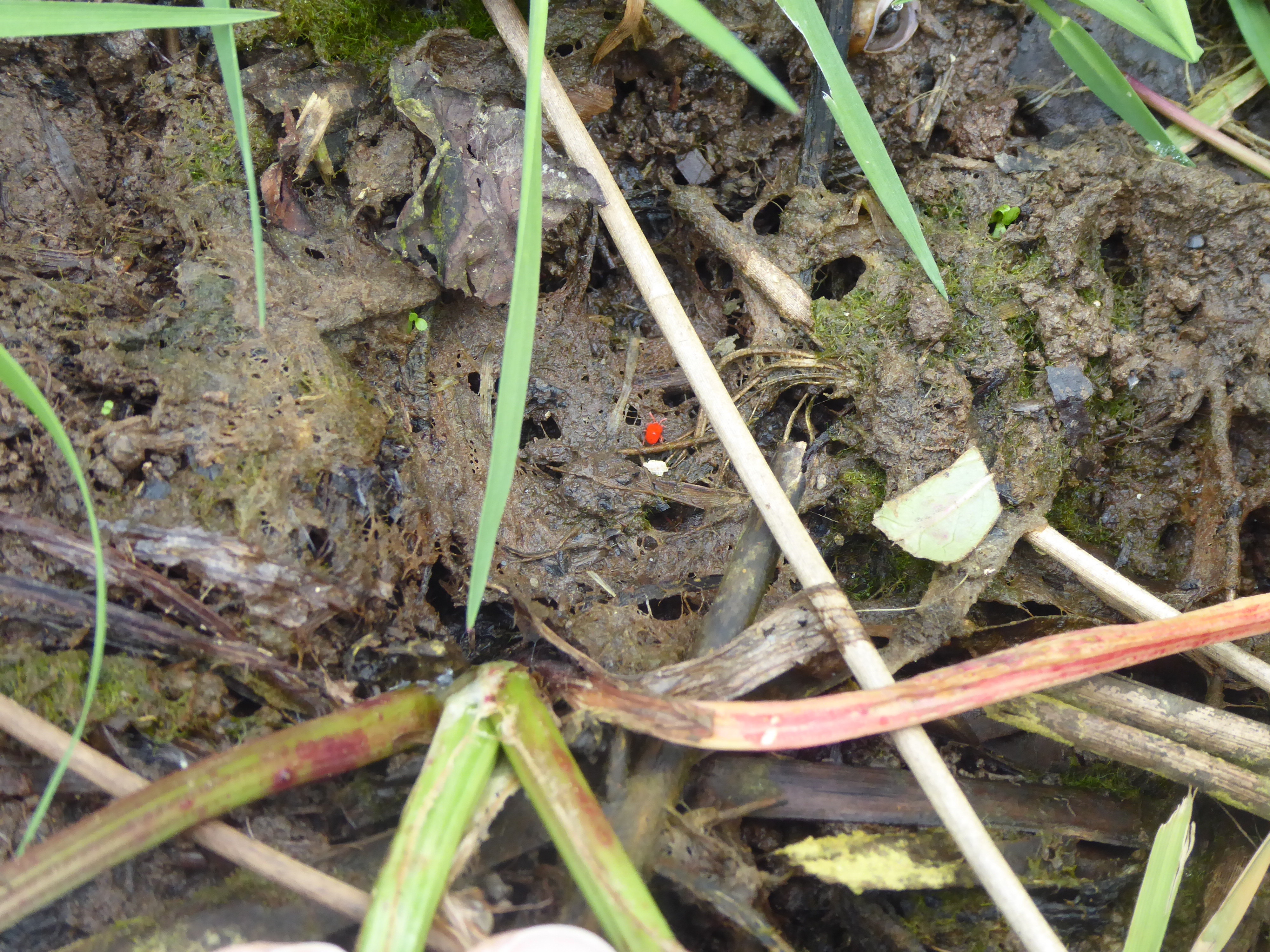
-
Field Wood-rush (Luzula campestris)
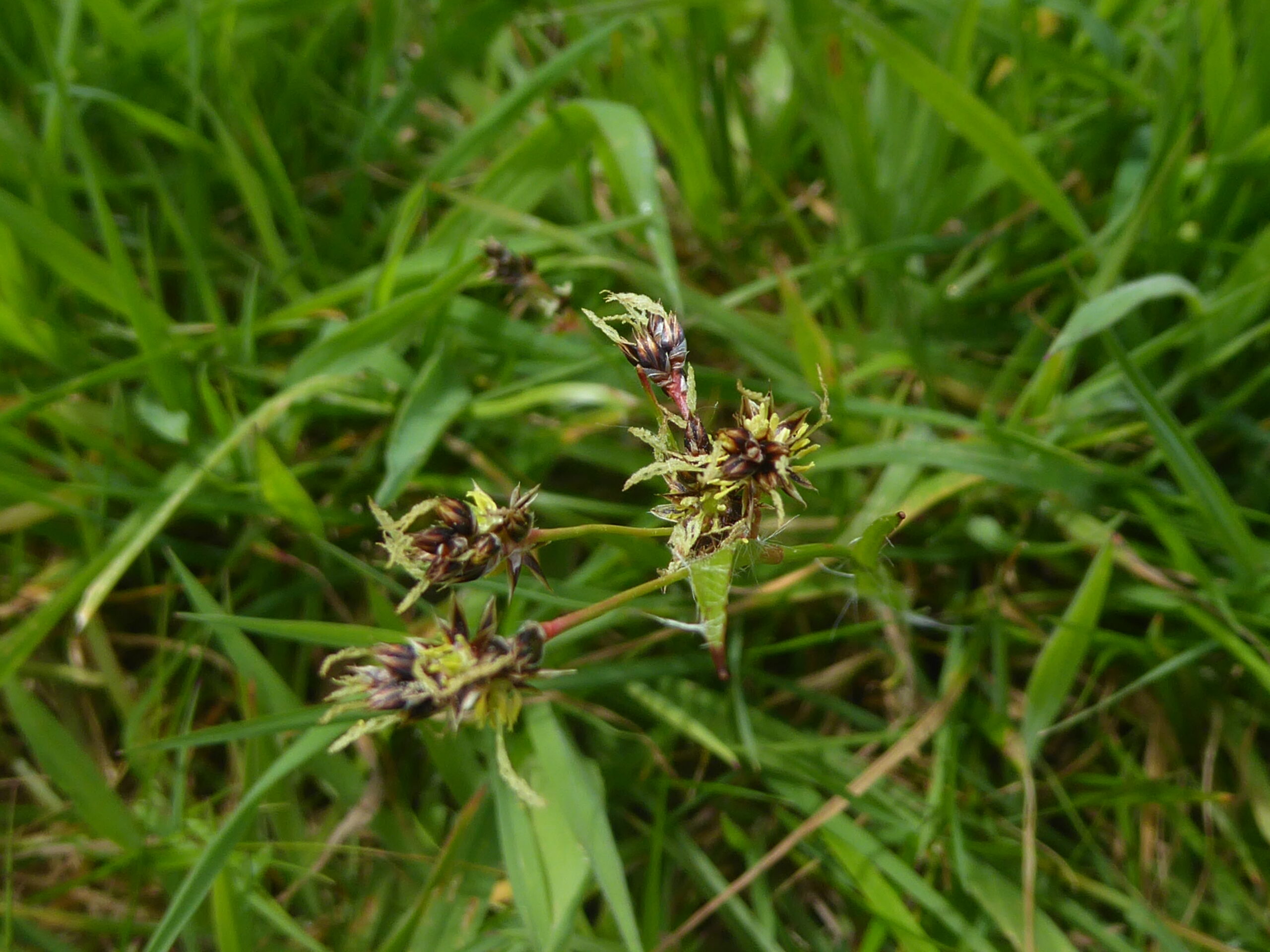
After a busy week, I went down with my camera to see what I could see and spotted a clump of strange grass flowers on the ramp. The tuft was quite short – a very unassuming clump of grass, apart from the flowers.
The field wood-rush grows to around 15cm with short runners, slim leaves, and flowers with clusters of florets on the end of bunches of short stalks. The flowers of grasses are known as panicles. These flowers are reddish and ‘oat-shaped’ with cream tips. This perennial likes moist short-grass habitats and flowers from March to June.
-
Black-margined Loosestrife Beetle (Galerucella calmariensis)
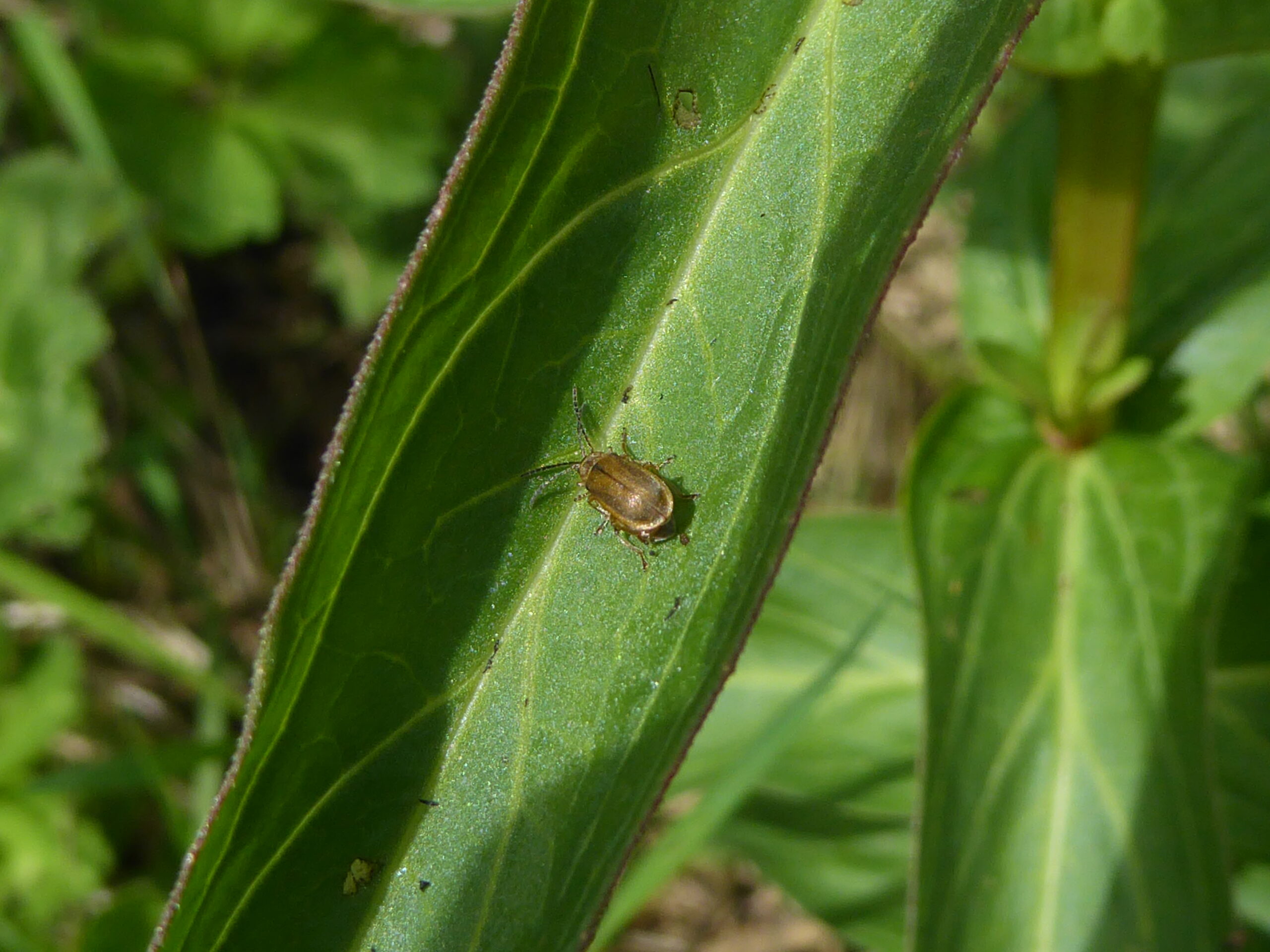
I first saw this beetle last July but didn’t manage to identify it in time to post it within the season. It is a Galerucella beetle. Browny-green with green legs and a brown stripe down the middle. There are several species looking fairly similar and the way to identify them is to identify the host plant.
The host plant in this case was purple loosestrife, so I think it is Galerucella calmariensis. The adults have overwintered in leaf litter near the purple loosestrife and have now emerged to feed on the leaves and mate. The females will then lay up to 500 eggs on the plant. The first instar larvae feed on the tips of new shoots, and later instars feed on the stems and underside of leaves. When they are ready to pupate the larvae move down to the soil, leaf litter or inside the stem.
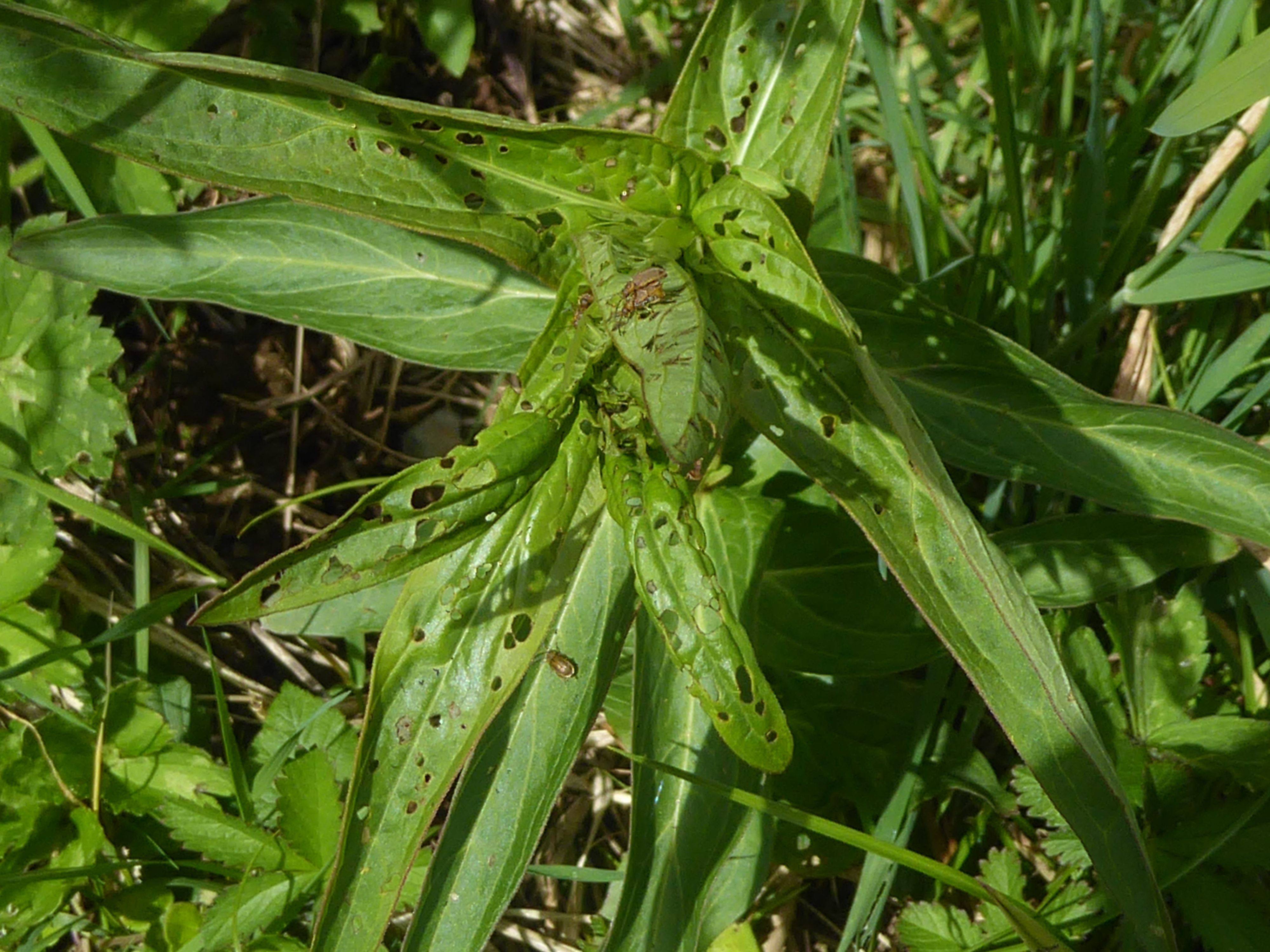
Emerged adult beetles (Other possibilities could be Galerucella lineola, the brown willow beetle, or the Galerucella tenella, the strawberry leaf beetle, which is found on meadowsweet and strawberries.)
